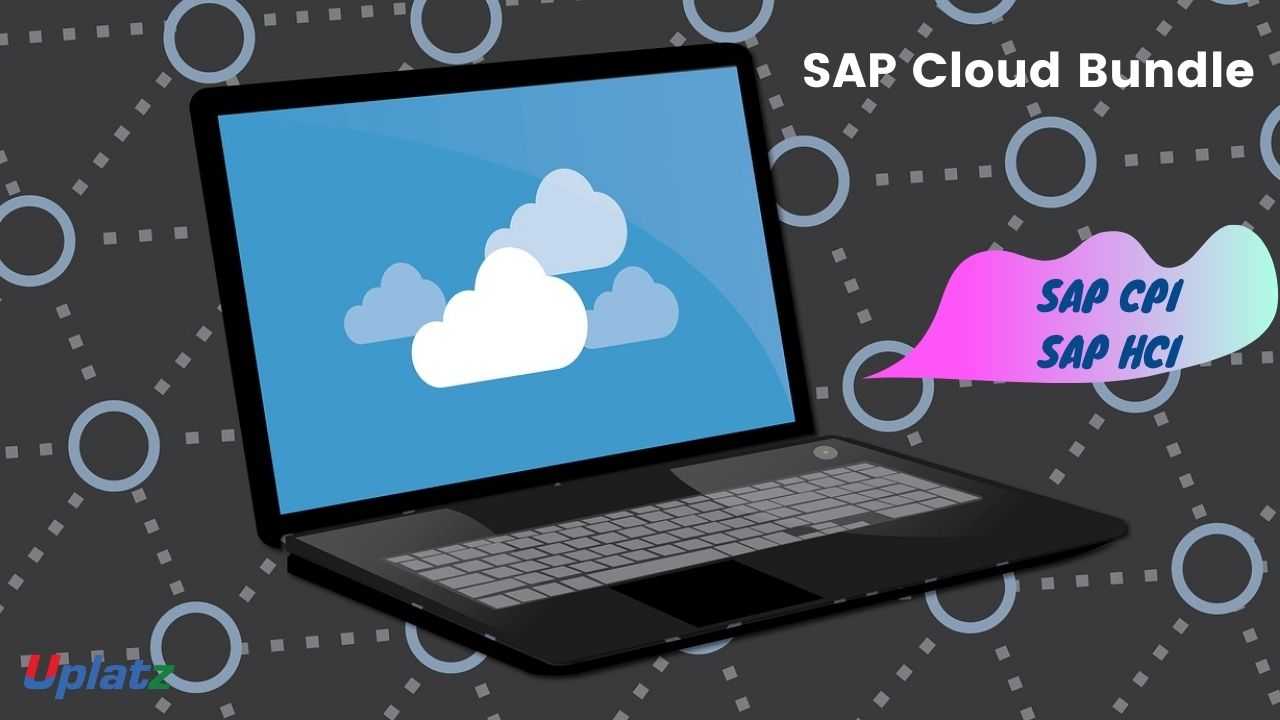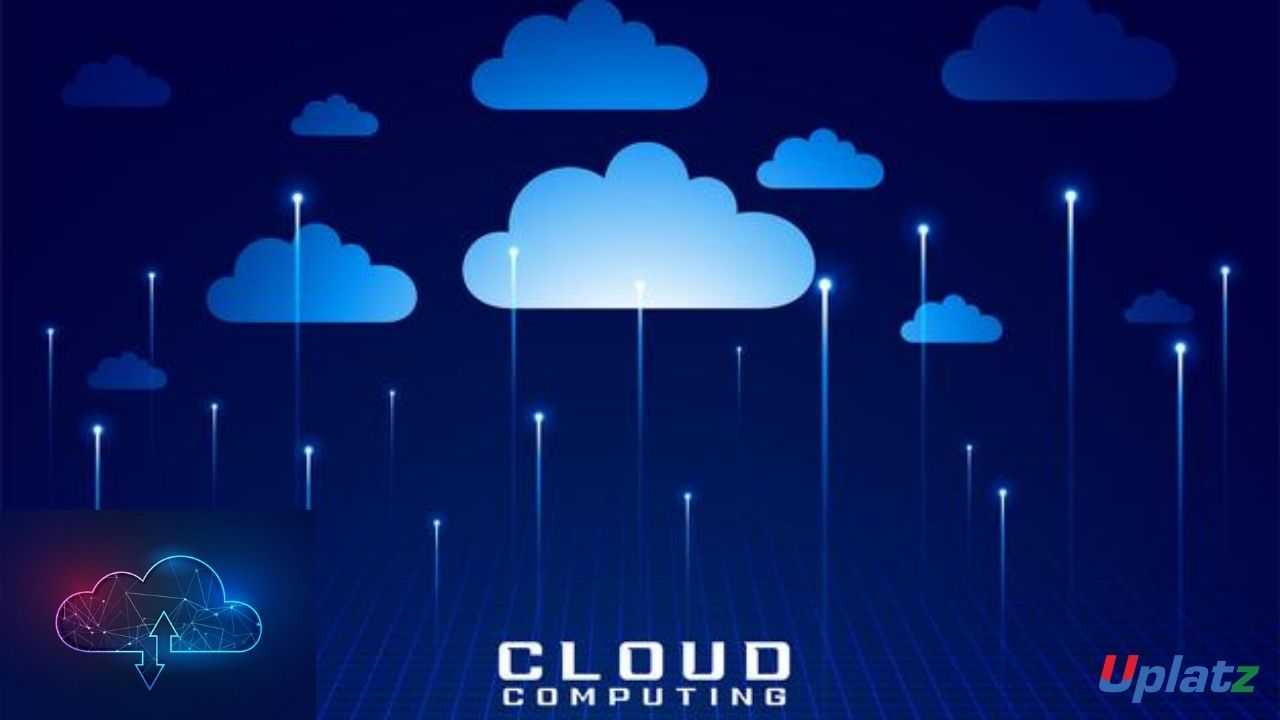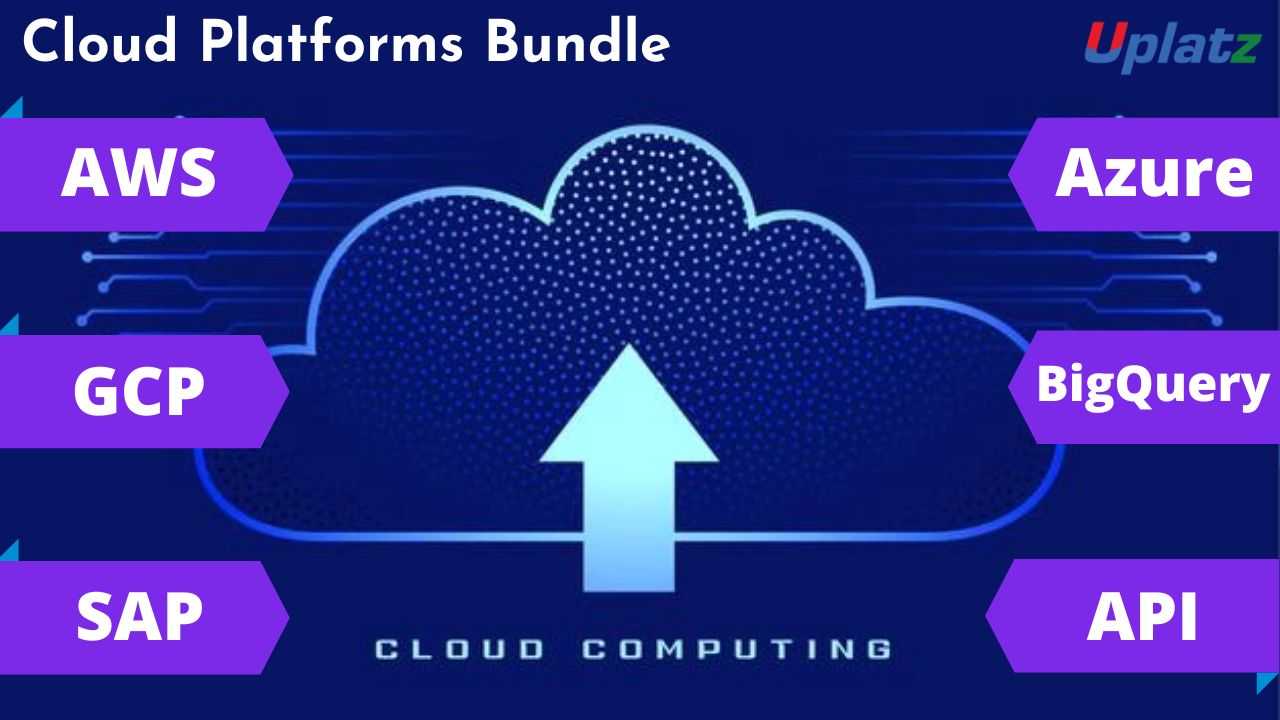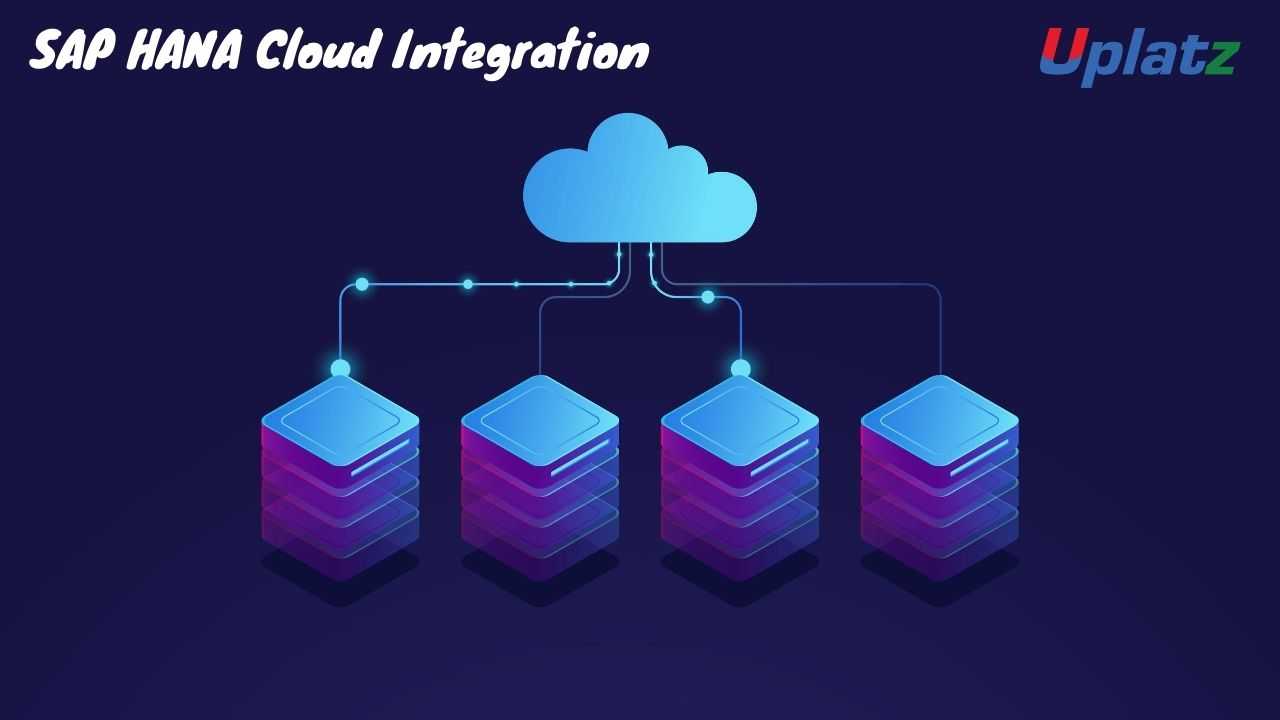Bundle Course - SAP Cloud (CPI - HCI)
Learn basics of SAP Cloud platform, CPI & HCI. Price Match Guarantee
Full Lifetime Access
Access on any Device
Technical Support
Secure Checkout
Course Completion Certificate
Price Match Guarantee
Full Lifetime Access
Access on any Device
Technical Support
Secure Checkout
Course Completion Certificate
 99% Started a new career
BUY THIS COURSE (
99% Started a new career
BUY THIS COURSE (GBP 22 GBP 49 )-
 87% Got a pay increase and promotion
87% Got a pay increase and promotion
Students also bought -
-

- Cloud Computing Basics
- 15 Hours
- GBP 12
- 89 Learners
-

- Bundle Course - Cloud Platforms
- 150 Hours
- GBP 22
- 1327 Learners
-

- SAP HCI (HANA Cloud Integration)
- 15 Hours
- GBP 12
- 54 Learners

SAP Cloud Platform is a cloud-based a tool to develop and deploy custom applications. This includes a full range of service catalog including database, storage and backup of data, reporting service and transaction layer to develop multi-platform software development.
The Main Features of SAP Could Platform Integration (CPI)
a).It is a cloud-based solution so there is rapid development going on
b).It is able to leverage your investments in Message Mapping so you can reuse the same code for it.
c).There are rapid development and new support packs and upgrade on the system that may affect your interfaces. SAP has an option to buy regression testing from them.
d).It is an immature system compared to SAP PI/PO
e).Cloud deployment may not be correct for all scenarios
f).Currently, the system is not capable of dealing with complex mappings in the UI.
The Features of SAP Hana Cloud Integration HCI
a).Automatic upgrades -HCI is automatically upgraded to the higher version without interrupting the message processing. Cloud managed service team handles all the operations related to the HCI upgrade.
b).Flexibility -This flexibility positively affects knowledge workers’ work-life balance and high productivity. Cloud to Cloud Integration, Cloud to On-Premise integration
c).Reliability - cloud computing is much more reliable and consistent than in-house IT infrastructure. Your organization can benefit from a massive pool of redundant IT resources, as well as a quick failover mechanism – if a server fails, hosted applications and services can easily be transited to any of the available servers.
d).Fast Implementation - we can implement the interfaces in less time when compared to a standard implementation. Some of the standard content which is delivered by SAP is to integrate success factors, Ariba, SAP Financial services, and SAP Cloud for customers with on-premise systems such as ECC and CRM.
User-friendly GUI
a. Web-based (HTML5)
b. Easy-to-use wizard-based
c. Role-based (self-service user management)
d. Designers
e. Operators
f. Administrators
Uplatz provides a complete end-to-end course covering all topics of SAP Cloud (CPI – HCI) in detail.
Course/Topic 1 - SAP CPI (basic to advanced) - all lectures
-
This will be a Full-fledged SAP CPI Tutorial for Beginners; we will learn everything from basics to advanced. main Index for the updated SAP CPI Tutorials Index. Before getting started it’s very important to know the basics of Cloud platform Integration. SAP CPI also is known as HCI is a cloud platform which provides a variety of service.
-
SAP CPI offers you to integrate or extend with SAP Business Suite, S/4 HANA, 3rd party integration. SAP created all the platforms to the cloud which is SAAS, like API management, like Hybrid Landscapes, etc. which includes sap cloud apps
-
Before getting started with SAP CPI Tutorials we have to understand what is SAP CPI (Cloud Platform Integration) properly. The below are the misconceptions which you need to understand before dealing with CPI.
-
SAP Cloud Platform is designed to be open and flexible, with different methods for consuming cloud services, open APIs and tools like the software developer's kit (SDK) for Apple iOS systems.
-
SAP CPI is a cloud-based integration platform running on the SAP HANA Cloud Platform for integrating cloud applications with other cloud and on-premise solutions. SAP CPI Cloud Integration allows you to quickly and seamlessly connect your cloud applications to other.
-
The pre-packaged content from SAP provides integration flows for integrating master and transactional data. It provides the connectivity support of IDOCs (connecting to the on-premise SAP CRM and SAP ERP systems) and SOAP over HTTPs (connecting to the Cloud for Customer scenario).
-
In this session we will cover end to end configuration to set up the SAP Cloud Integration (CF) for TMS.
-
In order to make the platform accessible to the broadest possible group of customers, SAP tries to support many open standards and known interfaces.
-
The aim of the partnership is to create a new iOS software development kit based on the SAP Cloud Platform Integration. This should make it possible to develop required business applications for the iPad or iPhone faster and more efficiently.
-
In addition to ready-made integration packages, SAP also offers special tools that work with AI support. In addition, different tools can be integrated into the platform and the integration of SAP Data Services and SAP Process Orchestration is also made available conditionally.
-
The SAP CPI supports a wide variety of APIs such as the Open Data Protocol (OData), Representational State Transfer (REST), Remote Function Call or Web Services.
-
As usual for SAP, the platform's on-demand applications also work with the highest security standards.
-
SAP Cloud Platform Integration manages to bundle the different applications on one platform. This leads to more transparency and also simplifies the monitoring of the individual applications.
-
SAP CPI offers different tools and supports different APIs. Java, Node.js, PostgreSQL as well as HTML5, RabbitMQ, Redis or server-side JavaScript can be used.
-
As usual for SAP, the platform's on-demand applications also work with the highest security standards. All servers are operated in dedicated data centres that have the latest security standards and also meet the ISO standard.
-
The platform is not only suitable for existing customers, but for all companies that have a historically evolved IT landscape and thus have to maintain and monitor countless different interfaces.
-
The platform offers more than 1,000 different apps from SAP and third-party providers, which can be used immediately if required without additional development effort.
-
The integration content can be used extremely flexibly for individual projects or for entire systems and can be adapted to individual needs. The platform also focuses on the shared use of data.
-
SAP Cloud Platform Integration is a modern, high-performance integration and development platform for companies that want to bundle and develop their various applications and services centrally in one environment.
-
SAP Cloud Platform is a platform as a service (PaaS) that goal to provide the while customers develop new and existing applications. SAP Cloud Platform supports in-memory capabilities, core platform services use and unique microservices to mobile-enabled cloud applications in a secure environment. It targets enterprises by giving them quick solutions to their critical needs.
-
This tutorial has been prepared for professionals who aspire to learn the fundamentals of Cloud Platform and application development. Consultants and project team members who have already been a part of SAP application development can draw benefits from this tutorial and refresh their knowledge.
-
SAP Cloud Platform is a cloud-based tool to develop and deploy custom applications. This includes full range of service catalog including database, storage and backup of data, reporting service and transaction layer to develop multi-platform software development. This tutorial gives you a comprehensive coverage of concepts of SAP Cloud and makes you comfortable to use it in your software development projects.
-
In this session you will learn that SAP Cloud Platform (SCP) is a platform as a service developed by SAP SE for creating new applications or extending existing applications in a secure cloud computing environment managed by SAP. The SAP Cloud Platform integrates data and business processes.
-
SAP Cloud platform offers PaaS based in-memory and microservice based mobile enabled cloud applications. SAP Cloud Platform provides you an option to control your choice of clouds, frameworks, and applications.
-
SAP Cloud Platform is the central Web-based user interface for administrators, and you can use this for providing access to various functions for configuring and managing applications using SAP Cloud platform.
-
SAP Cloud Platform Integration (CPI), which is a new tool to make SAP Integrations with. Like a replacement of SAP PI/PO, though it has some different options and flows.
-
SAP CPI is one of the pieces of evidence to support this theory. This tool is meant to define the course of the process between systems, or in other words: to modify data or an algorithm for their processing.
-
SAP Cloud Integration for data services allows you to efficiently and securely use ETL (extract, transform, load) tasks to move data between on premise systems and the cloud. With SAP Cloud Integration for data services, you can replicate the data and define how the data is mapped to your database schema.
-
SAP public cloud application like SAP Integrated Business Planning for Supply Chain use SAP Cloud Integration for data services to integrate with the on-premise SAP system.
-
SAP Cloud Integration for data services represents the integration layer of a hybrid scenario. Monitoring it is relevant for all hybrid scenarios using this integration form. For SAP Cloud Integration for data services, we can collect exceptions in the tasks running in the service.
-
SAP Cloud Platform Integration service helps you to connect cloud and on-premise applications with other SAP and non-SAP cloud and on-premise applications. This service has the capabilities to process messages in real-time scenarios spanning different companies, organizations, or departments within one organization.
-
SAP CPI video is the present service in the market, there are a rich set of capabilities. Security performance and pre-package responsibilities which will inform to the cloud. The SAP Cloud Platform Integration is the service that is working on the cloud platform.
-
SAP CPI is designed as Integration Platform-as-a-Service (PAAS) which helps to integrate multiple independent systems/applications for a business process. CPI can do Cloud to Cloud, Cloud to On-premise, On-premise to On-premise and Hybrid model.
Course/Topic 2 - SAP HCI - all lectures
-
In this first video on SAP HCI, you will get a brief overview and understanding of Service Oriented Architecture or commonly abbreviated as SOA like what is SOA, usage of SOA, the concept of Stateless and Stateful in SOA, what is a Middleware, the list of popular Middleware tools, the diagrammatic explanation of SAP Business Connector under the R/3 System, a pictorial representation and explanation on the Dual-Stack. Further, you will be getting an overview of PI.
-
In this tutorial, you will be getting a detailed understanding of SAP HCI, starting with HANA Cloud Platform (HCP), what are the open standards that are provided with the HANA platform, its popular features, and services, the pricing and packaging of HANA Cloud Platform, and others.
-
In this video, the trainer will be showing you the complete configuration setup for SAP HCI. You will be learning the complete process from the scratch, starting with downloading the software, working with the eclipse screen, information on HCI Tenants, and others.
-
This video is a workaround on the SAP HCI system, focusing on the settings to the tabs like Discover, Design, and Monitor. Along with this, you will also get a brief overview on managing the lifecycle of APIs, test APIs, building sample apps, an explanation on the SAP Hybris Marketing Cloud –file-based data load, file-based load – Accounts. You will also get a pictorial representation of the Concur Expense Integration with Financials and a detailed explanation of this.
-
In this tutorial, you will get a more detailed understanding of the working principle of SAP HCI, starting with the Nodes of HCI, working with the features like High Availability, Scalability, and system access on HCI Training Demo.
-
This video will show you how to configuration and testing steps for SAP HCI. The trainer will be showing you the steps involved in the complete work process throughout the session.
-
In this video, the trainer will show you the works involved while setting up the Deploy Integration Content and testing it. The trainer will be seen working on the GeoIPSOAP screen with working on the Mapping mechanism in SAP HCI.
-
In this video, you will learn how the communication process is made in the SAP HCI course, starting with the GEOIP Integration Process, the work process of sending and receiving messages to SAP HCI, and what are the steps involved in it. This will be shown in the SAP system. Furthermore, you will be learning about the Message Container, the explanation on Employee Central to ERP Employee Data, the Camel’s Message Model, and the Message Persistence.
-
In this video, you will learn how to create a new project in SAP HCI, starting with creating an Integration Project and then creating an Integration flow. The trainer will show you a step-by-step process of the complete workflow in the system.
-
This video will work you around the complete procedure and settings section of the Content Modifier and how it is done. You will also be learning about the Message Mapping and how it is done in the SAP HCI system.
-
In this tutorial, you will learn about the Cloud Platform Environment Variables, the list of Environment Variables, the procedure of creating an SAP HCI Integration project and iFlow in Eclipse, working with Odata, working with the Workspace Integration Designer, and lastly a pictorial representation of Employee Central to ERP Employee Data with the explanation.
-
This video is about working with the GeoIP Interface along with working with the Mapping mechanism in the SAP HCI and the Transformation work process in the system.
-
This video is a complete practical session on working with Importing ES Repository Interface with the Message Mapping Definition, getting an overview of SuccessFactors Employee Central to ERP Organizational Data along with the Employee Central to ERP Generic Object.
-
In this session, you will learn about the SAP Hybris Cloud for Customer Integration, the sender and receiver channel for COD, and lastly working with the various Deployed Artifacts. All these will be shown by the trainer in the SAP HCI system.
-
This video is about the IDoc configuration, what are the TCodes used in the procedure, the major steps involved in the IDoc processing, working with the Integration Settings, the ports in IDoc processing, and the RFC Destination.
-
In this video, you will learn how SAP HCI helps in implementing business roles like Business Configuration, Business Partners, Customers, People, Sales, and other activities. Under this, you will be learning the Business Overview, Implementation Projects, Reports, Download, and Upload Code List. Furthermore, you will also learn about the Communication system for Businesses.
-
In this last tutorial on SAP HCI, you will learn about the Transport Mechanism in SAP HCI, with working on the Message Monitoring, the Deployed Artifacts, and working on Demo Integration Training. Furthermore, you will be knowing the SAP HCI Security; its connectivity protocols, and working with the Transport Protocol of SAP HCI.
a).Learn about various aspects of SAP CPI & HCI.
b).Learn how to use content modifier, number ranges, exception handling.
c).Learn request-reply, content enricher, message mapping, content based router, splitter / gather, session handling, etc
d).Learn how to code using Groovy script and perform various functions using Groovy.
This course provides an in-depth understanding of SAP Cloud Integration (CPI) and SAP HANA Cloud Integration (HCI). Participants will learn how to design, implement, and manage integrations between SAP and non-SAP systems in the cloud environment.
Week 1: Introduction to SAP Cloud Integration
a).Overview of SAP Cloud Integration (CPI) and HANA Cloud Integration (HCI)
b).Importance of cloud integration in modern enterprises
c).Key features and benefits of SAP CPI/HCI
d).Architecture and components of SAP Cloud Integration
Week 2: Getting Started with SAP CPI
a).Setting up the SAP CPI environment
b).Overview of the SAP Cloud Platform
c).Navigating the CPI web interface and tools
d).Hands-on exercise: Creating your first integration flow
Week 3: Integration Flow Design
a).Understanding integration flow (iFlow) concepts
b).Designing iFlows: Triggers, message mapping, and routing
c).Working with adapters: HTTP, IDOC, SFTP, and more
d).Hands-on exercise: Building a simple integration flow
Week 4: Data Mapping and Transformation
a).Introduction to message mapping techniques
b).Using the mapping tools: Graphical and XSLT mapping
c).Handling XML and JSON data formats
d).Hands-on exercise: Implementing data transformation in an iFlow
Week 5: Error Handling and Monitoring
a).Managing errors in integration processes
b).Utilizing the CPI monitoring tools
c).Configuring alerts and notifications
d).Hands-on exercise: Implementing error handling in an iFlow
Week 6: Advanced Integration Scenarios
a).Handling complex integration scenarios: Process orchestration
b).Using SAP APIs for integration
c).Introduction to SAP Process Orchestration (PO)
d).Hands-on exercise: Building a multi-system integration scenario
Week 7: Security and Authentication
a).Overview of security features in SAP CPI
b).Configuring authentication methods: Basic, OAuth, SAML
c).Understanding data encryption and secure communication
d).Hands-on exercise: Implementing security in an integration flow
Week 8: SAP Cloud Integration with On-Premise Systems
a).Introduction to the SAP Cloud Connector
b).Configuring secure connections to on-premise systems
c).Hybrid integration scenarios
d).Hands-on exercise: Setting up a hybrid integration
Week 9: Best Practices and Performance Optimization
a).Best practices for designing and managing integration flows
b).Performance tuning and optimization techniques
c).Monitoring and troubleshooting integration processes
d).Hands-on exercise: Applying best practices in a real-world scenario
Week 10: Capstone Project
a).Overview of capstone project objectives
b).Participants will design a comprehensive integration solution using SAP CPI
c).Integrating multiple systems and demonstrating data flows
d).Presenting the final project to the class
Recommended Resources:
Textbooks:
1)."SAP Cloud Platform Integration: A Comprehensive Guide" by G. R. Kumar
2)."Cloud Integration with SAP: The Complete Guide" by Anirban Bhaduri
Online Resources:
SAP Learning Hub, openSAP, and community forums for tutorials and updates
Tools:
2).SAP Cloud Platform Integration service
3).SAP Cloud Connector
Assessment:
1).Weekly quizzes and assignments
2).Mid-term project focusing on integration flow design
3).Final capstone project showcasing a complete integration solution
The SAP Cloud (CPI - HCI) Certification ensures you know planning, production and measurement techniques needed to stand out from the competition.
In addition to HCI, we also have what's known as SAP Cloud Platform Integration, or CPI. CPI lets you connect cloud-based applications with other applications, both SAP and non-SAP. It spans cloud and on-premises apps. It connects processes, data, or both, in app-to-app (A2A) and business-to-business use cases.
CPI (Cloud Platform Integration) SAP Cloud Platform Integration (Cloud Integration) supports end-to-end process integration across cloud-based and on-premise applications based on the exchange of messages
You need to generate the Certificate from it. Simplest method is to import a Passport as Key Pair in SAP CPI Keystore. Once it is imported click on Download certificate to get client certificate. This certificate will be used in SAP Keystore and Certificate to user mapping tab
Uplatz online training guarantees the participants to successfully go through the SAP Cloud (CPI - HCI) certification provided by Uplatz. Uplatz provides appropriate teaching and expertise training to equip the participants for implementing the learnt concepts in an organization.
Course Completion Certificate will be awarded by Uplatz upon successful completion of the SAP Cloud (CPI - HCI) online course.
The SAP Cloud (CPI - HCI) draws an average salary of $105,080 per year depending on their knowledge and hands-on experience. The SAP Cloud (CPI - HCI) job roles are in high demand and make a rewarding career.
SAP CPI at a glance Integrates cloud applications into the application landscape with ease. It helps to seamlessly connect cloud applications with other cloud and on-premises apps, both from SAP and third-party providers
Note that salaries are generally higher at large companies rather than small ones. Your salary will also differ based on the market you work in.
The following are the job titles:
a).SAP CPI Consultant.
b).SAP CPI Admin.
Q1.Define Sap Analytics Cloud?
Answer :SAP Analytics Cloud refers to an all-in-one cloud platform offered as software as a service (SaaS) specifically for planning, business intelligence (BI), planning and predictive analytics providing data discovery, data visualization, simulation, what-if, forecasting besides the many other capabilities. This has been built primarily on SAP Cloud Platform, and this provides a complete, unified and secure public cloud analytics experience meant for maximizing data-driven decision making.
Q2.Is The Sap Analytics Cloud Multitenant?
Answer :Yes, the SAP Analytics Cloud has been available as a public cloud (software as a service, multi-tenant) offering. A ‘private cloud’ (software as a service, single tenant) is available as an option.
Q3.Where Is Sap Analytics Cloud Hosted?
Answer :At present, SAP Analytics Cloud functions on the runs on SAP Cloud Platform data centers all around the world. SAP has also recently announced partnerships with Amazon Web Services (AWS), Google Cloud Platform (GCP) and Microsoft Azure for running SAP Cloud Platform and they also plan to run SAP Analytics Cloud on these IaaS platforms soon. Although there are no plans for running on other IaaS platforms.
Q4.How Can I Get Access To The Web Application Of Sap Cloud Platform Integration To Be Able To Configure The Cloud Integration Packages?
Answer :Initially SAP supported the provisioning of a SAP Cloud Platform Integration tenant with the help of the web tooling capability only, i.e., without any runtime node. At present, this offering is unavailable. In case you have any SAP Cloud Platform Integration license, then you can use the Web Application of the SAP Cloud Platform Integration tenant you have.
Q5.What Is The License Is Required For Using The Sap Cloud Platform Integration Feature?
Answer :The Cloud Integration Content Runtime can only be used together either with the SAP Process Orchestration or with SAP Process Integration. Either of the products is required to be licensed separately. Besides configuration of the cloud integration content in the new offering, the user will also require a SAP Cloud Platform Integration license.
Q6.How Will I Know If Within The Sap Analytics Cloud, Is My Data Is Secure Within Sap?
Answer :SAP Analytics Cloud functions exclusively on SAP Cloud Platform which regularly meets the international security standards.
Q7.Does The Cloud Connector Send Data From On-premise Systems To Sap Cloud Platform Or The Other Way Around?
Answer :The connection is opened from the on-premise system to the cloud, but is then used in the other direction.An on-premise system is, in contrast to a cloud system, normally located behind a restrictive firewall and its services are accessible thru the Internet. This concept follows a widely used pattern often referred to as reverse invoke proxy.
Q8.Is The Connection Between The Sap Cloud Platform And The Cloud Connector Encrypted?
Answer :Yes, by default, TLS encryption is used for the tunnel between SAP Cloud Platform and the Cloud Connector.If used properly, TLS is a highly secure protocol. It is the industry standard for encrypted communication and also, for example, as a secure channel in HTTPS.Keep your Cloud Connector installation updated and we will make sure that no weak or deprecated ciphers are used for TLS.
Q9.Can I Use A Tls-terminating Firewall Between Cloud Connector And Sap Cloud Platform?
Answer :This is not possible. Basically, this is a desired man-in-the-middle attack, which does not allow the Cloud Connector to establish a mutual trust to the SAP Cloud Platform side.
Q10.What Is The Oldest Version Of Sap Business Suite That's Compatible With The Cloud Connector?
Answer :The Cloud Connector can connect an SAP Business Suite system version 4.6C and newer.









